Variacs (Variable Transformers)
Filters
Filters
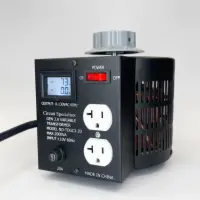
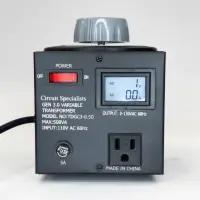
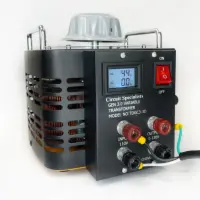
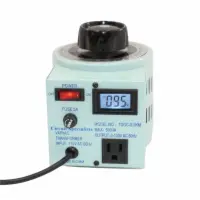
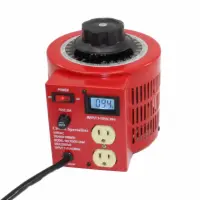
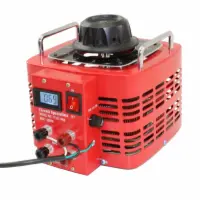
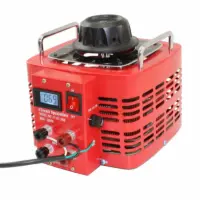
In the world of electric circuits and electric engineering projects, transformers are defined as passive electrical devices capable of transferring energy from one circuit to another circuit (or even to multiple other circuits). They typically have two or more wire coils and two circuits—a primary one and a secondary one.
There are a dozen different types of transformers out there; each one designed to fulfill unique or specific requirements. In this section, we’re covering variable voltage transformers—also known as “variacs.”
What are Variable Voltage Transformers?
Variable Voltage Transformers (also known as Adjustable Voltage Transformers) are transformers that can produce differing levels of output voltage from just one input voltage. These provide users with an efficient, trouble-free way to change voltage in a short amount of time.
Compensation is one of the main reasons why people would want to change the secondary voltage so quickly. When the incoming line voltage changes, it’s best that the secondary voltage that serves the load remains regulated. This lessens the risk of intense fluctuation or continual voltage hunting conditions. This is why a voltage tolerance limit—from half a volt to a handful of volts—is maintained.
Variable voltage transformers are honestly the best choice for professionals and hobbyists who desire a more versatile option for changing the ratio between primary and secondary coils. They’re widely accessible, easy to operate, and (depending on the model and brand) can be highly intuitive. You can even program variable voltage transformers to automatically adjust to maintain constant or regular voltage output.
What are Variacs?
To fully explain what a variac is, you need to know what a “variable autotransformer” is.
An “autotransformer” is a transformer that consists of only one coil shared by both the primary and secondary side of the circuit. The term “variable” in a variable autotransformer basically refers to the ratio of the primary windings to the secondary windings—i.e., the ratio of the secondary voltage to the primary voltage.
“Variac” is the generic name for variable autotransformers.
Variacs are arguably the most popular type of variable voltage transformers. They are AC power supplies that are cheaper, smaller, and a lot more portable than dual-winding transformers. They also have a number of useful casual and industrial applications that make them highly sought after.
From energy-saving models to industrial-strength types, there’s definitely a variac out there to suit your specific needs.
Variac Structure
Although different types of variacs will have variations in design, all models follow roughly the same basic structure.
Parts of a Variac/Variable Autotransformer:
- Primary winding
- Secondary winding
- Laminated magnetic core
- Carbon brush (for secondary voltage, rotates)
- Carbon brush (variable tap, moves up and down)
How it Works:
Variable autotransformers have a single partially-exposed winding—the primary winding—wrapped around a laminated magnetic core. There’s a carbon brush (also known as the movable wiper) that is positioned in such a way that it can create an electrical connection with the winding. The transformer’s primary connection is made to both ends of the primary winding.
It’s secondary connection—called the common connection—is made to just one end of the winding and is tapped through a movable carbon brush. This carbon brush can rotate or slide along the exposed section of the primary winding. The transformer’s ratio changes as the wiper moves.
Variable voltage transformers are typically designed with a number of primary windings—enough to produce a secondary adjustable voltage that can be tuned from a few volts to fractions of a volt per turn. As long as the carbon brush is always in contact with the primary windings, the secondary voltage can be adjusted.
Common Applications for Variacs
There are a lot of common uses and practical applications for variacs. As we mentioned earlier, they’re more portable and more cost-effective than regular AC power supplies, which pretty much makes them a top pick for short-term projects and casual hobbies. Variacs can be used to gradually revive previously dormant electronic equipment. They can also be used to regulate servo motors and control the temperature of ovens and heaters.
Voltage adjustment, when used with thermostatic control, provides more uniform heating.
You can also use variacs to simulate various voltage and line conditions for experiments, or power electrical equipment designed for voltage that isn’t the typical 120V or 240V supplied domestically.
Here are some other applications:
- Regulating voltage
- Controlling specified input voltage to rectifier elements to generate variable DC voltages from an AC source
- Operating electrical equipment—typically motors—at the correct or optimal voltage even with subnormal or higher-than-normal supply
- Varying step-transformer output voltage by control of input voltage
- Starting synchronous or induction motors in order to provide 50%-60% of the total voltage to the motor stator during start-up.
- Correcting voltage in subnormal or over-voltage supplies on 1-phase, 2-phase, or 3-phase circuits
- Compensating for voltage drops by giving small boosts to the distribution of a cable
- Controlling AC motors and DC motors operation rectified AC circuits
- Powering fans and other motors with low starting torque
- Controlling the brightness/dimness of incandescent lamp circuits
- Extending lamp life by operating it below rated voltage
- Calibrating electrical equipment and controls
- Compensating for appreciable voltage drops at the end of lines where distances run too long (like in rural distribution systems)
Advantages of Variacs/Variable Voltage Transformers
Affordable. As mentioned earlier, variacs are affordable AC power supplies that are capable of fulfilling voltage needs and operating at the same level of transformers or power sources that go for four times its price. This is why variacs are highly sought-after by casual hobbyists.
Efficient. A variac or autotransformer is much more efficient for voltage conversion compared to a two-winding transformer. This has to do with less ohmic loss and core loss thanks to the reduction of transformer material.
Effective. Variable voltage transformers or variable autotransformers are better at regulating voltage than an ordinary two-winding transformer of the same rating. This is due to their significantly lower drop in resistance and reactance.
Portability. Variable autotransformers are about half the size of a standard two-winding transformer. This makes them easier to handle. It also is partly why they’re much cheaper.
Recommended Variacs/Variable Voltage transformers
Compact and incredibly affordable, this Variac TDGC2-0.5 is rated at 110 volts input with a variable output range of 0 to 130 volts. Energy-efficient and imparting no waveform distortion, this model is capable of a maximum output current of 5A with a capacity (KVA) of 0.5.
The output, being AC, does not affect any AC frequency. This means you can change a 110 volt AC input at 60 Hz to anything between 0 volts to 130 volts—depending on what you need—without affecting the 60 Hz cycle.
Features & Specifications:
- Input: 110 volts, 60Hz
- Output: 0-130 volts, 60Hz
- Dimensions: 5” x 6” x 6.5”
- Weight: 5kg, 11lbs.
Note: The Variac TDGC2-0.5 model does not convert AC current to DC current. It therefore needs an AC input in order to provide an AC output.
Popular Applications:
This variable voltage transformer is actually very popular for roasting coffee at home. The voltage range allows for incredibly fine temperature control, which is important when doing something as precise as roasting coffee beans.
The Variac TDGC-0.5 can also be used in science lab projects, audio editing and amplifying, and film or video lighting applications.
Variac TDGC2-0.5D with Digital Display
Portable and energy-efficient, the Variac TDGC2-0.5D with digital display is a variable voltage transformer capable of producing variable voltage between 0 and 130 volts. It imparts no waveform distortion and can accept input up to 110 volts. As for current, maximum current output is 5A with 0.5 capacity (KVA). Input must be AC, output is AC and does not affect the input frequency.
As with the previous variac listed here, you can have an input voltage of 110 AC and 60 Hz, and this autotransformer will change the output AC voltage without affecting the Hz cycle.
Features & Specifications:
- Input: 110 volts, 60Hz
- Output: 0-130 volts, 60Hz
- Dimensions: 5” x 6” x 6.5”
- Weight: 5kg, 11lbs.
- Screen: Lighted LCD Digital Voltage Readout
Note: The Variac TDGC2-0.5D model does not convert AC current to DC current. It therefore needs an AC input in order to provide an AC output. It is also not compatible with most GFI (Ground Fault Interruption) wall outlets.
Popular Applications:
This model is quite popular for audio projects; editing, amplification, recording, and the like. It’s especially excellent for us with old tube amplifiers. Other potential uses include science lab experiments, lighting applications, and small electrical engineering projects.
Control your AC voltage output effortlessly, and with minimal risk, with the Variac Transformer TDGC2-3D. This versatile model is capable of a high efficiency output with no waveform distortion—perfect for a myriad of professional and casual projects. It’s rated up to 30 Amps or 2KVA Peak, which is 25A Continuous. However, it won’t convert AC to DC power and it won’t affect the cycle rate. If your power system provided 60Hz, the TDGC2-3D will not distort the output.
This unit also comes with an LCD Digital Display readout rather than the standard analog dial display.
Features & Specifications:
- Screen: Backlit LCD Digital Display
- Output: 30 Amps, 3KVA Peak | 25A Continuous
- Conversion: AC Input to AC Output
Note: The Variac TDGC2-3D is a fairly powerful unit rated at 30 amps peak output. As most household outlets are only rated for 15 amps, take care in verifying that the power supply you’re using can deliver enough current to safely and optimally operate this model. It’s also worth noting that peak output is recommended for short-term operation, and sustained operation shouldn’t be more than 25 amps of continuous output.
Popular Applications:
This model is great for all sorts of home DIY applications. It can help you regulate the temperature for cooking or coffee bean roasting. Other less common—but no less ideal—applications include electrical engineering hobbies, science projects, and audio editing/broadcasting projects.
